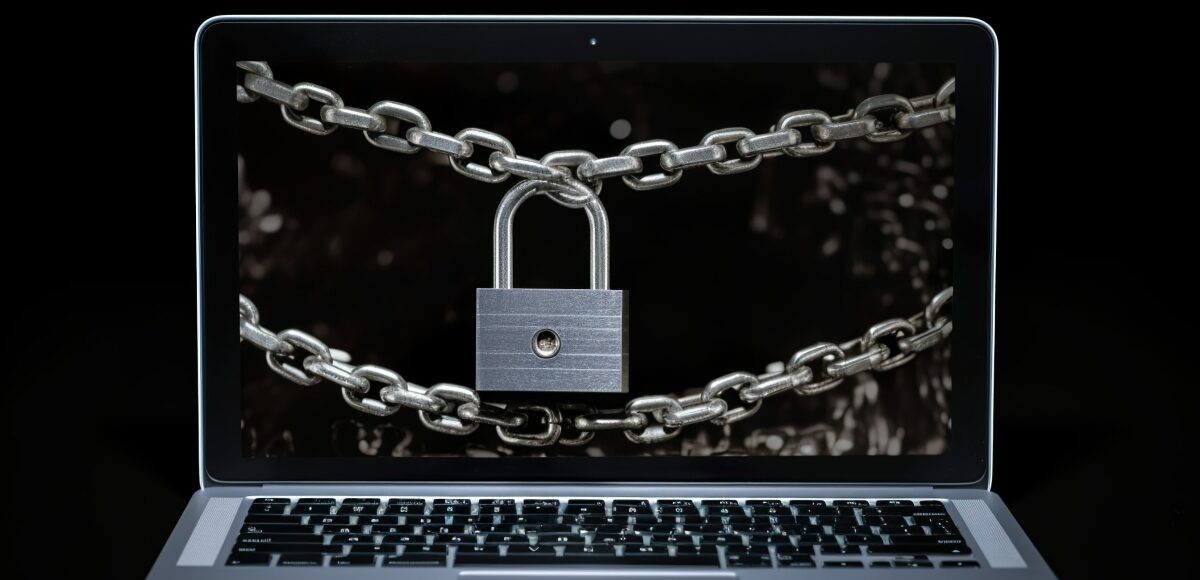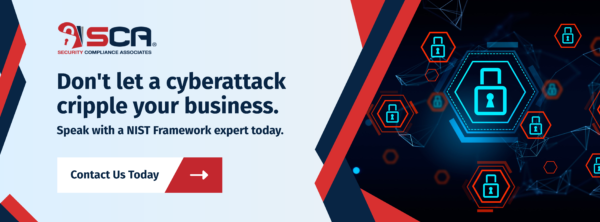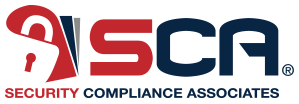
- December 17, 2023
- SCA Editor
- 461 Views
- 0 Likes
- Blog
NIST Compliance: Special Publications
The National Institute of Standards and Technology (NIST) has emerged as a beacon, providing robust cybersecurity and control frameworks that outline best practices and standards for cybersecurity. As federal agencies increasingly rely on private sector partners to fulfill their missions, adherence to NIST guidelines becomes not just a recommendation but a mandatory requirement.
Request Your Free NIST Cybersecurity Framework Consultation Now
The path to compliance can be complex and challenging, no matter what sector your organization operates in. As articulated in its Special Publications, the NIST framework serves as a comprehensive guide to understanding, implementing, and maintaining the stringent security measures demanded by federal agencies. This article aims to illuminate the critical aspects of NIST compliance, with a specific focus on the challenges faced by federal government contractors with subcontractor relationships.
The NIST Cybersecurity Framework
Since its inception in 2014, the NIST Cybersecurity Framework (CSF) has played a pivotal role in guiding organizations to mitigate cybersecurity risks effectively. Acknowledging the evolving landscape of cybersecurity threats, NIST initiated the development of CSF 2.0 to address contemporary challenges and enhance usability. The response from organizations utilizing CSF 1.1 has been affirmative, emphasizing its continued effectiveness while recognizing the need for updates to meet current and future demands.
It is worth mentioning that the NIST Cybersecurity Framework is a voluntary set of best practices that both commercial and public entities can adopt. It is also flexible to meet the size and complexity of each organization. The NIST Cybersecurity Framework is considered a “framework of frameworks” and incorporates portions of NIST 800-53, the International Standardization Organization (ISO) and others.
NIST is actively engaging with the cybersecurity community to refine and validate CSF 2.0, ensuring its relevance for the future while upholding the framework’s original objectives. Seeking feedback from organizations, NIST aims to evaluate the draft revision’s alignment with prevailing practices and guidance resources and its responsiveness to identified cybersecurity challenges. The overarching goal is to streamline the framework, making it more accessible and adaptable to diverse organizational needs.
As CSF 2.0 nears finalization, updated Implementation Examples and Informative References will be maintained on the NIST Cybersecurity Framework website, leveraging the NIST Cybersecurity and Privacy Reference Tool (CPRT). Resource owners and authors interested in mapping their resources to the finalized CSF 2.0 are invited to collaborate with NIST for the creation of Informative References.
Core Functions: Identify, Protect, Detect, Respond, Recover
NIST compliance focuses on five core functions. They are to identify threats, protect from threats, detect threats, respond effectively and recover from any security breaches. The Core encapsulates industry standards, guidelines, and best practices, facilitating the seamless communication of cybersecurity activities and mission objectives throughout the organization.
It enables a comprehensive approach, bridging the executive level to implementation and operations at an elevated tier. The NIST CSF categories, referred to as core functions, play a pivotal role in establishing a robust business foundation and serve as a guiding framework for identifying and adhering to legal and regulatory cybersecurity requirements.
Benefits of Adopting the NIST Framework
One primary advantage to NIST compliance lies in the framework’s capacity to provide a structured and adaptive approach to managing and mitigating cybersecurity risks. By aligning with NIST guidelines, organizations gain a comprehensive set of industry-recognized standards and best practices, facilitating a more robust defense against evolving cyber threats. This framework serves as a strategic roadmap, allowing businesses to proactively identify, assess, and prioritize cybersecurity vulnerabilities, ultimately enhancing their resilience in the face of an ever-changing threat landscape.
NIST compliance also fosters a culture of continuous improvement and innovation within organizations. The framework’s risk-based approach encourages a dynamic cycle of assessment, response, and mitigation. This iterative process ensures that cybersecurity measures remain current and responsive to emerging threats, helping organizations stay ahead of the curve. The NIST framework’s adaptability suits organizations of all sizes and industries well, providing a flexible yet structured approach to cybersecurity that can be tailored to meet the unique needs and risk profiles of diverse enterprises. As a result, organizations that implement the NIST framework not only enhance their cybersecurity defenses but also cultivate a proactive and resilient cybersecurity culture that evolves in tandem with the ever-shifting cybersecurity landscape.
Related Content: NIST Cybersecurity Consulting: Make the Process Easy
NIST Special Publications (SPs)
The expansive NIST library includes over 200 special publications that address specific areas for cybersecurity, privacy and risk management. Specifically, the SP 800-series reports on the Information Technology Laboratory’s research, guidelines, and outreach efforts in computer security and its collaborative activities with industry, government, and academic organizations. The full library of Special Publications and be found in the NIST Computer Security Resource Center. The following three are the publications we routinely see organizations adopting and that we use every day.
NIST SP 800-53: Security and Privacy Controls for Federal Information Systems and Organizations
On November 7, 2023, the National Institute of Standards and Technology (NIST) released an updated version of Special Publication 800-53 (SP 800-53) labeled as Release 5.1.1, superseding the previous version, Revision 5 (09/23/2020). This patch release includes minor grammatical edits and clarifications, introduces “leading zeros” to control identifiers for enhanced clarity (e.g., AC-1 becomes AC-01), and incorporates one new control and three supporting control enhancements related to identity providers, authorization servers, cryptographic key protection, identity assertion verification, and token management.
The release provides an analysis of updates between Revision 5 and Revision 4, a mapping of Appendix J Privacy Controls (Rev. 4) to Revision 5, and mappings between Revision 5 and other frameworks and standards such as the NIST Cybersecurity Framework, NIST Privacy Framework, and ISO/IEC 27001:2022. These supplemental files aim to assist organizations in understanding and implementing the changes while providing a broader context for compatibility with various cybersecurity frameworks and standards.
NIST SP 800-171: Protecting Controlled Unclassified Information (CUI) in Nonfederal Systems and Organizations
This publication underscores the critical importance of safeguarding Controlled Unclassified Information (CUI) within nonfederal systems and organizations, as it directly influences the federal government’s ability to execute essential missions and functions successfully. Offering recommended security requirements, this document guides federal agencies in preserving the confidentiality of CUI when situated in nonfederal systems. It particularly addresses scenarios where non-federal entities are not collecting or managing information on behalf of federal agencies nor operating systems for them.
The guidelines are applicable when no specific safeguarding requirements for the confidentiality of CUI are outlined by the relevant laws, regulations, or governmentwide policies for the specific CUI category in the CUI Registry. These security requirements extend across all components of nonfederal systems and organizations involved in processing, storing, transmitting, or providing protection for CUI. Primarily intended for use in contractual agreements between federal agencies and non-federal organizations, these requirements aim to establish a robust framework for securing CUI.
The security requirements outlined in this publication span multiple Control Families, covering crucial aspects of information security. These families include Access Control, Awareness and Training, Audit and Accountability, Configuration Management, Identification and Authentication, Maintenance, Media Protection, Physical and Environmental Protection, Personnel Security, System and Communications Protection, and System and Information Integrity. By addressing these diverse control families, the publication offers a comprehensive and structured approach to ensuring the confidentiality of CUI in nonfederal systems, emphasizing the importance of holistic security measures across various components and processes.
NIST SP 800-66 (HIPAA)
The HIPAA Security Rule centers on protecting electronic protected health information (ePHI) within the purview of regulated entities. Regulated entities are required to safeguard ePHI against anticipated threats, hazards, and unauthorized uses or disclosures. This publication offers practical guidance and resources tailored for regulated entities of varying sizes, providing insights into security concepts outlined in the HIPAA Security Rule. The aim is to assist these entities in effectively safeguarding ePHI, fostering a better understanding of the necessary security measures prescribed by the rule.
Step-by-Step Guide to Achieving NIST Compliance
Achieving NIST compliance with the assistance of expert consultants can make the process painless and easy and ensure your organization is able to maintain and expand its federal contracts. Let’s outline the process:
1. Identify and Prioritize Assets
Begin by meticulously identifying and prioritizing your organization’s assets, and understanding their value and criticality to establish a foundation for effective cybersecurity measures.
2. Conduct Risk Assessments
Regularly conduct comprehensive risk assessments to systematically evaluate potential threats, vulnerabilities, and the impact of incidents, ensuring proactive mitigation strategies are in place.
3. Implement Security Controls
Deploy and maintain robust security controls tailored to your organization’s risk profile, encompassing measures such as access controls, encryption, and monitoring systems to fortify against cyber threats.
4. Develop an Incident Response Plan
Formulate a well-defined incident response plan that outlines clear steps and roles to swiftly and efficiently respond to cybersecurity incidents, minimizing potential damage and downtime.
5. Monitor and Detect Security Events
Implement continuous monitoring mechanisms to detect and analyze security events in real-time, enabling a proactive response to potential threats before they escalate.
6. Respond to Incidents
Execute the incident response plan effectively, mobilizing resources to contain and mitigate the impact of security incidents, while preserving and analyzing relevant evidence for future improvements.
7. Recover from Incidents
Establish a comprehensive recovery plan to restore systems and operations post-incident, incorporating lessons learned to enhance resilience and fortify defenses against future cybersecurity challenges.
In conclusion, the NIST framework and NIST compliance are ongoing endeavors. With NIST SPs, organizations can stay up to date on the latest cybersecurity recommendation innovations. By working closely with professional cybersecurity consultants, government contractors can ensure they are and will remain compliant with the NIST framework, thus helping them maintain existing contracts and secure additional opportunities.


